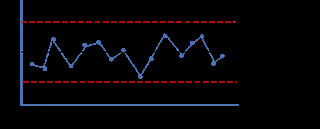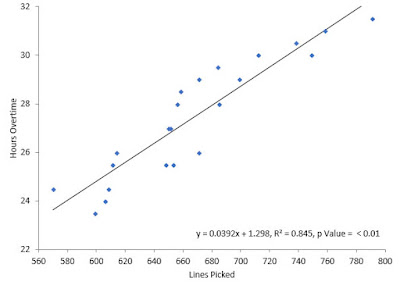7 QC Tools for Six Sigma Projects
Quality is essential component for effective organizations run. Six Sigma is center around enhancing procedures to guarantee better quality. It is fundamental that clients are given items and administrations that are advantageous for them and subsequently, worth the cash they pay. So as to be effective in business, Customer fulfillment is dependably the most imperative objective. To guarantee the most ideal items and administrations are sold to clients at a reliable dimension, organizations should utilize the Seven Quality Control instruments (7 QC Tools). The proficient and viable utilization of these 7 QC devices can help keep up the consistency of the items and administrations being delivered. The utilization of these devices is spread out all through the distinctive periods of the DMAIC procedure..
Why use the 7 QC tools?
The 7 QC instruments is a graphical systems recognized as being most useful in investigating issues identified with quality. The 7 QC apparatuses are key instruments to enhance the procedure and item quality. They are utilized to analyze the creation procedure, recognize the key issues, control changes of item quality, and offer answers for stay away from future deformities
What are the 7 QC Tools?
The 7 Quality control instruments are the most broadly polished arrangement of apparatuses in all the fruitful Japanese organizations. It has be seen that a large portion of the modern issue loan themselves to the sensible and through use of the 7 QC devices. The 7 QC instruments includes:
1. Cause-and-Effect Diagrams / Fishbone Diagram
2. Pareto charts
3. Control Charts
4. Scatter diagrams
5. Histograms
6. Flowcharts
7. Inspection sheet
7 QC Tools: Cause-and-effect diagrams
The first of the 7 QC instruments is the Fishbone Diagram sorts out thoughts and comprehend the connection between potential causes and an impact or an issue by designing, masterminding and arranging potential causes into topics and sub-subjects in anticipation of a reason ID exertion. It animates thinking when building up the rundown of the potential wellsprings of an issue. It guides solid activity and tracks the potential causes amid an examination exertion to decide if the thing altogether adds to the issue or not.
Each association face issue. Each issue has contributory causes. These reason should be recognized, to dispose of issue or limit the impact of the issue. All reason including reasonable justification (i.e which have no happened before) ought to be recognized with the goal that that preventive move can be made..
7 QC Tools: Pareto Charts
The second of the 7 QC devices is the Pareto graph is utilized to organize the benefactors which have the greatest effect on an issue, or which speaks to the biggest zones of chance. A Pareto outline is an apparatus to concentrate consideration on needs while attempting to decide. It is a decent specialized apparatus that portrays the information in a basic and simple to-peruse bar graph. The outline thinks about and dissect the recurrence or events of an occasion in a procedure and distinguish the greatest givers. These outlines convey the rule of 80:20. It expresses that 80% of an impact originates from 20% of the causes
7 QC Tools: Control Chart
The second of the 7 QC devices is the Pareto graph is utilized to organize the benefactors which have the greatest effect on an issue, or which speaks to the biggest zones of chance. A Pareto outline is an apparatus to concentrate consideration on needs while attempting to decide. It is a decent specialized apparatus that portrays the information in a basic and simple to-peruse bar graph. The outline thinks about and dissect the recurrence or events of an occasion in a procedure and distinguish the greatest givers. These outlines convey the rule of 80:20. It expresses that 80% of an impact originates from 20% of the causes
7 QC Tools: Scatter diagrams
The fourth of the 7 QC instruments is the disperse chart. The disperse outline is otherwise called a dissipate plot or a relationship chart. It imagines the connection between two factors. The chart help check for anomalies as well.
The fourth of the 7 QC instruments is the disperse chart. The disperse outline is otherwise called a dissipate plot or a relationship chart. It imagines the connection between two factors. The chart help check for anomalies as well.
7 QC Tools: Histograms
The fifth of the 7 QC apparatuses is the histogram. A histogram is a pictorial portrayal of a lot of information. The histogram is a structured presentation that demonstrates the recurrence of qualities. It is made by gathering the estimations into ''cells" or "receptacles." Histograms are helpful to comprehend the area, spread, and state of the information. Moreover, potential exceptions or missing information can be seen.
7 QC Tools: Flow charts
The 6th of the 7 QC apparatuses is the stream diagram. A stream graph is a visual portrayal of a procedure that can delineate:
- What exercises are finished, by whom, in what grouping
- · Hand-offs between divisions or people
- · Internal and outer operational limits:
7 QC Tools: Checklists
The remainder of the 7 QC instruments is the agenda. The reason for an agenda is to outline, and now and again; graphically portray a count check of occasion events. An agenda is utilized when clients are keen on checking the quantity of events of an occasion, for example, imperfections or non-conformance. In numerous occurrences, an agenda will condense countable information identified with specific kinds of deformities and will give an unpleasant graphical portrayal of where, in a section or procedure, surrenders happened..
When to use the 7 QC Tools?
All in all, these instruments are normally alluded to as the 7 QC devices. In the Define period of the DMAIC procedure, Flowcharts are essential. In the Measure stage, the initial three of the 7 QC instruments are applicable: Fishbone Diagram, Pareto Chart, and Control Charts. In the Analyze stage, the Scatter Diagram, Histogram, and Checklist are significant. The Control Chart is additionally pertinent in the Improve stage.
Three key statements of the 7 QC Tools
"Ishikawa's announcement gives three key bits of knowledge into these instruments, to be specific that these seven devices are:
- Applicable in critical thinking circumstances most normally experienced by Quality Engineers
- Quantitative in nature and depend on except for Flowcharts and Cause-and-Effect graphs, on numerical information
- Most ordinarily utilized in quality control to help with Tracking, Monitoring and breaking down information
The 7 QC apparatuses are extraordinary approaches to picture data identifying with critical thinking to enhance the nature of procedures, items, and administrations. These instruments can be utilized all through the DMAIC cycle and furthermore gives proof of how well the Six Sigma venture has been executed by its information driven standards.











0 Comments
Thank you for massage, Revert you shortly.